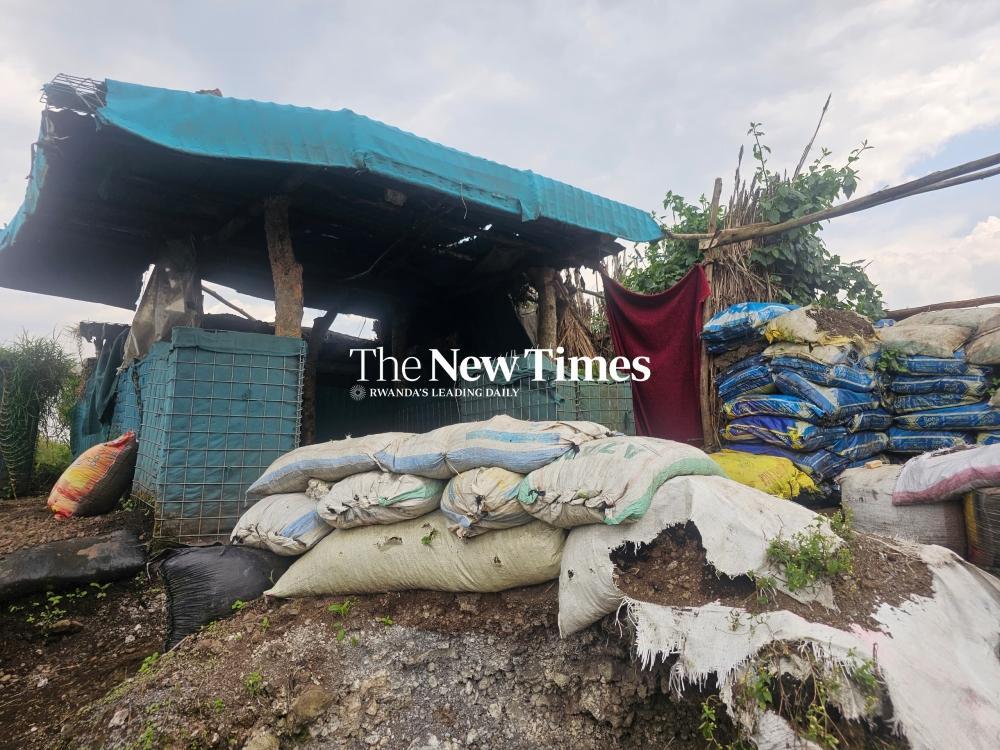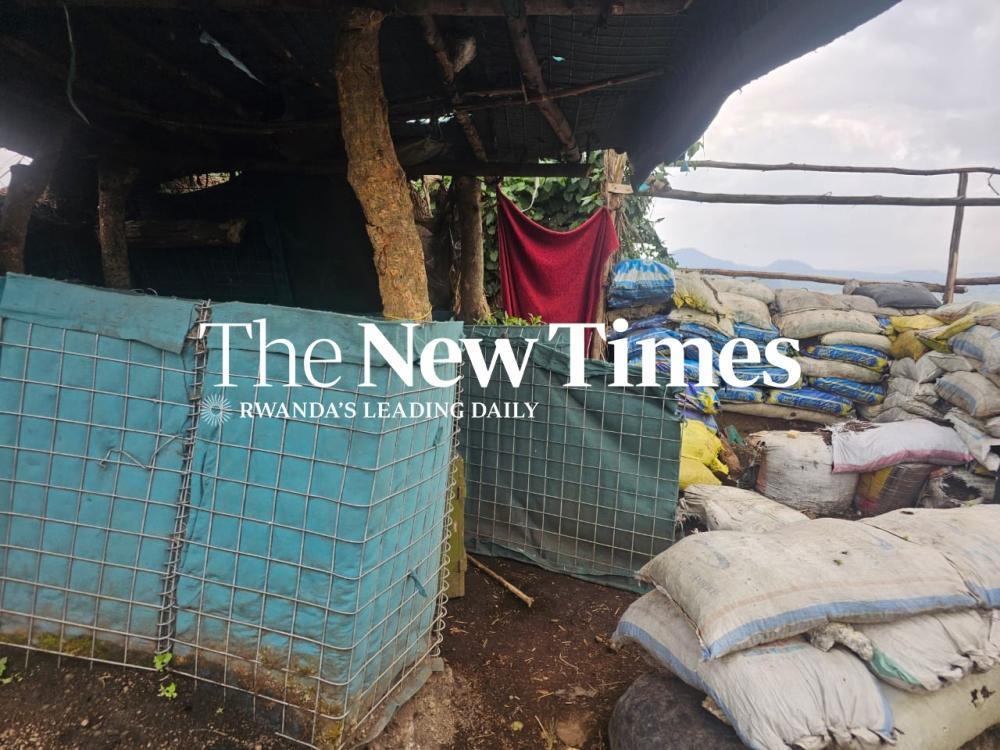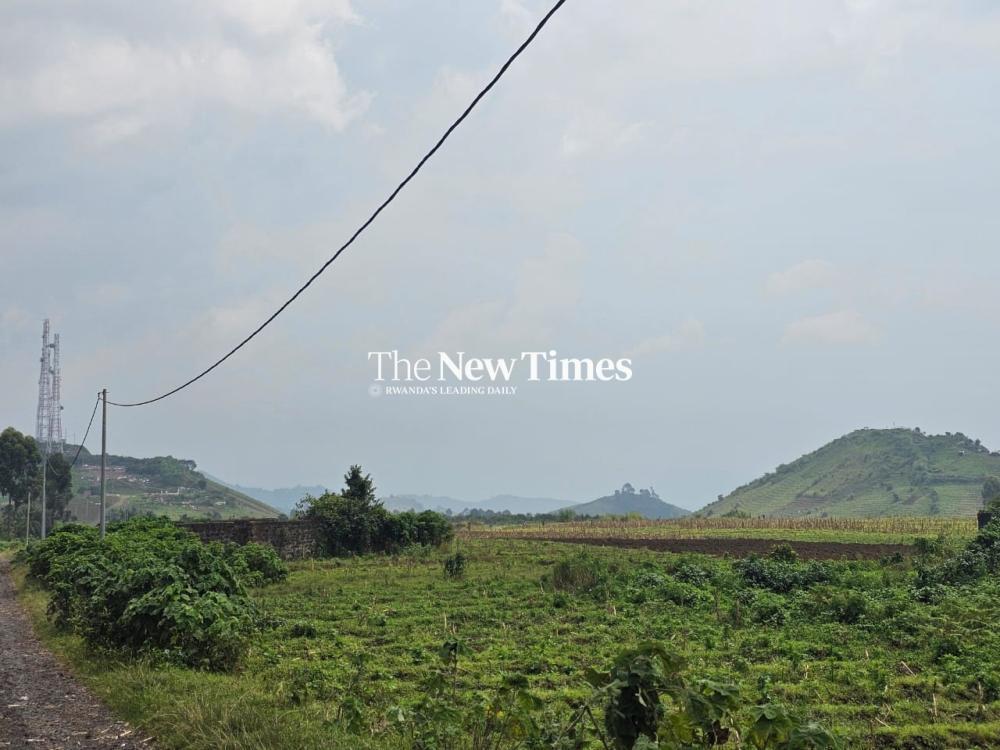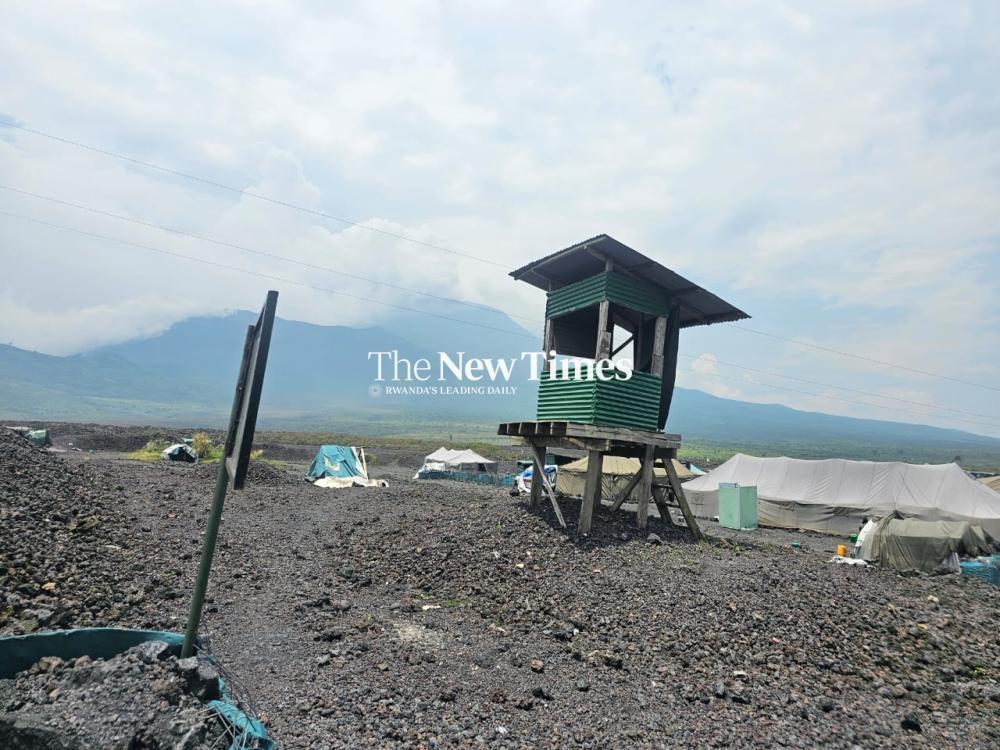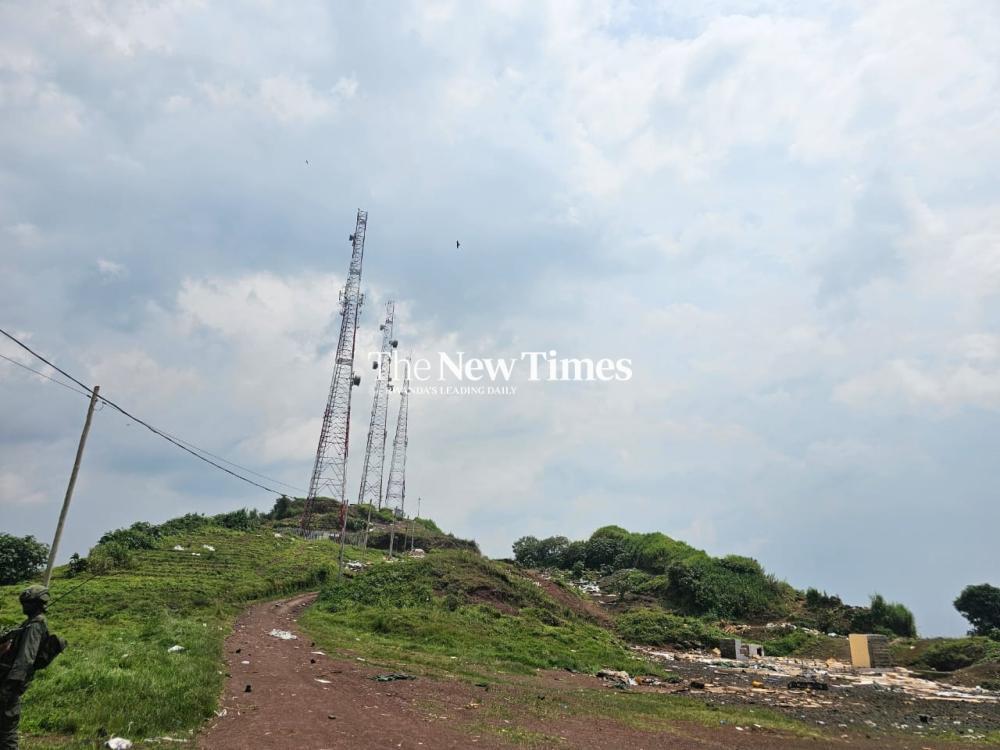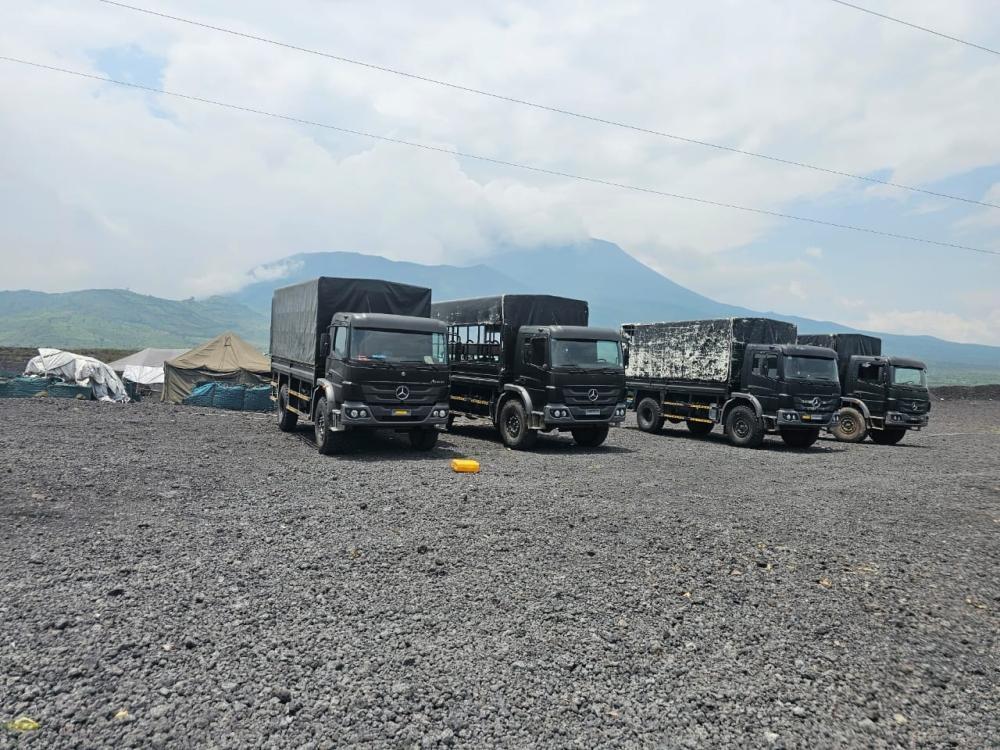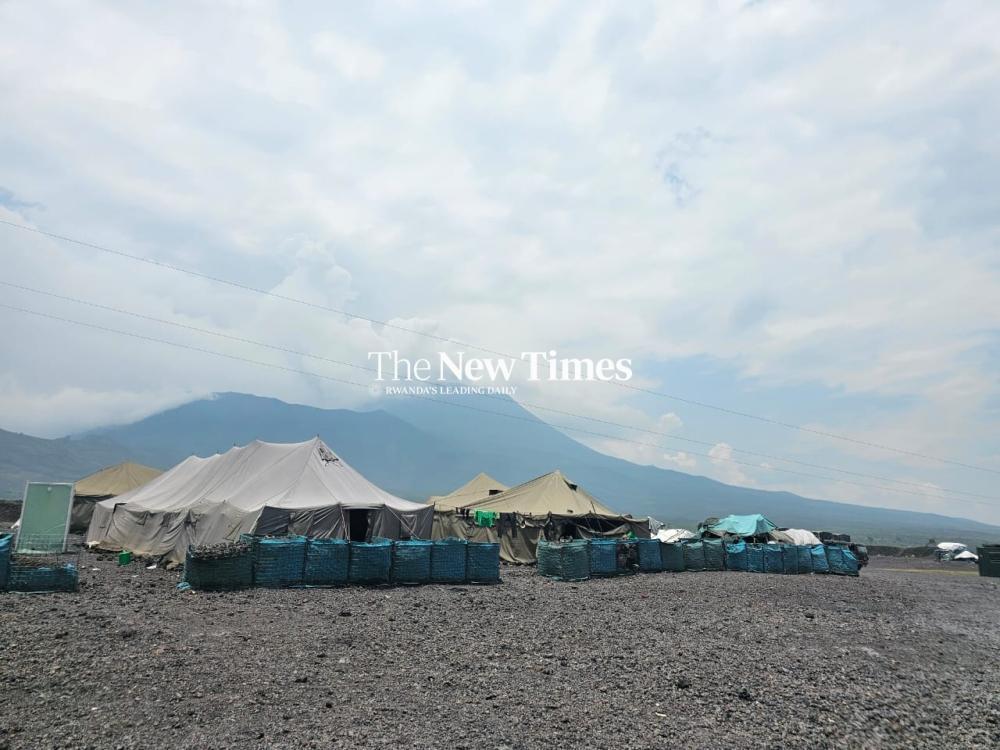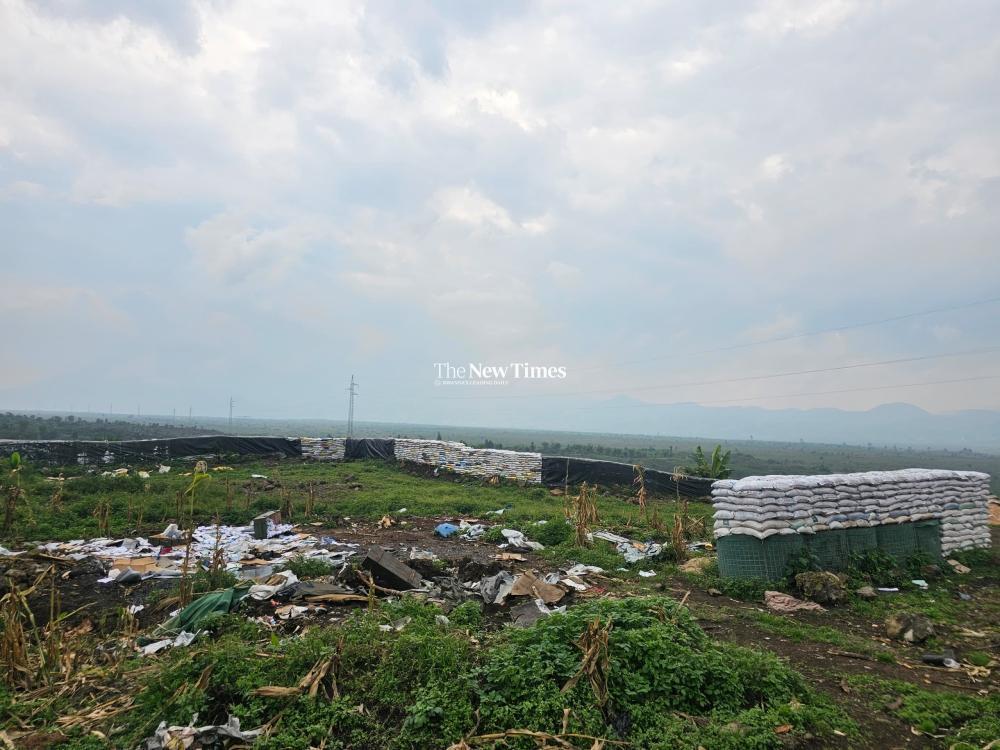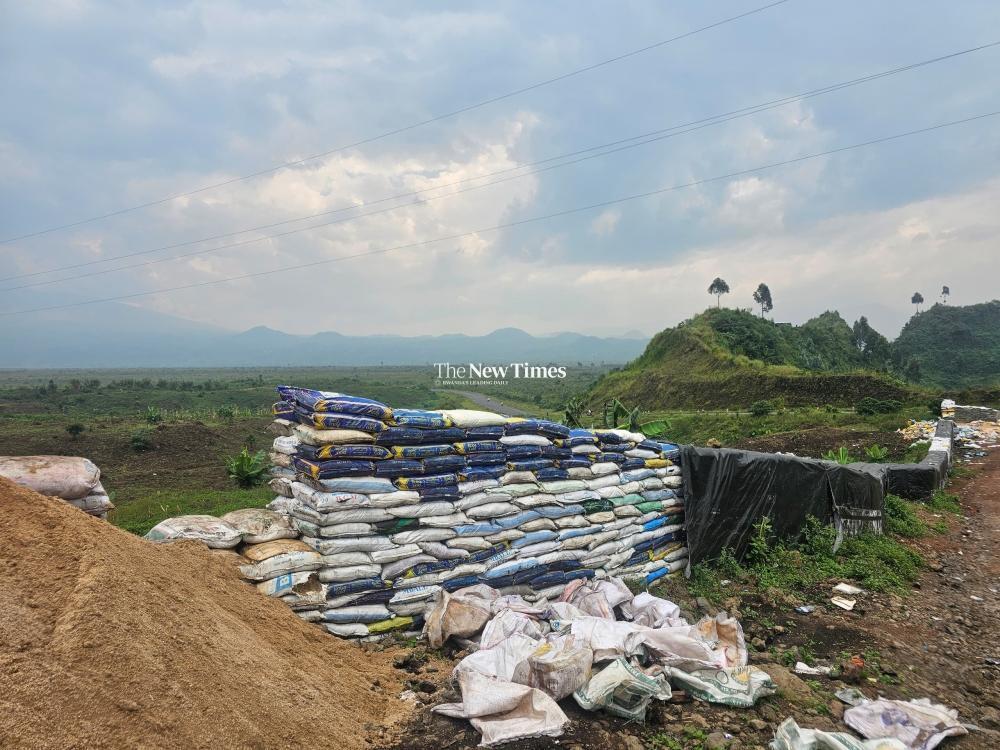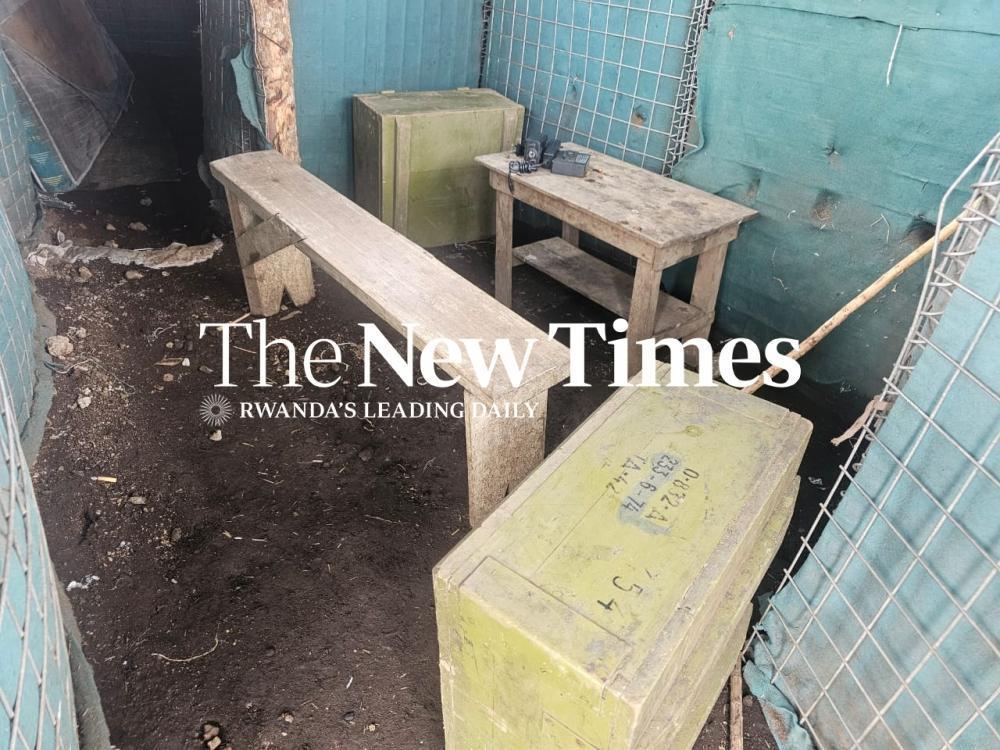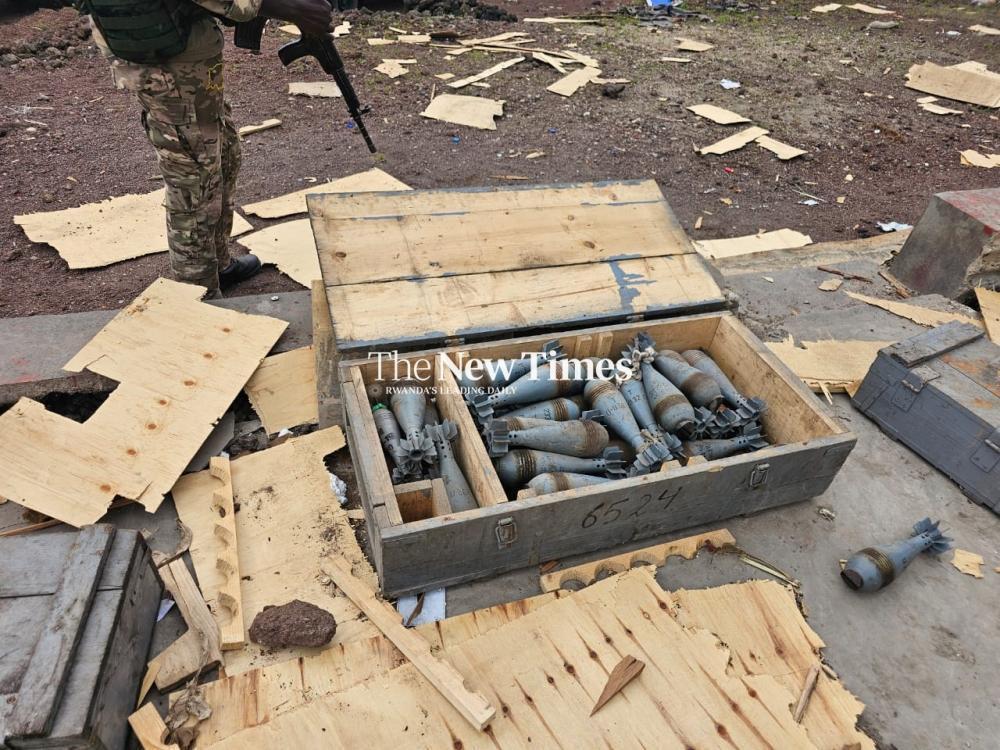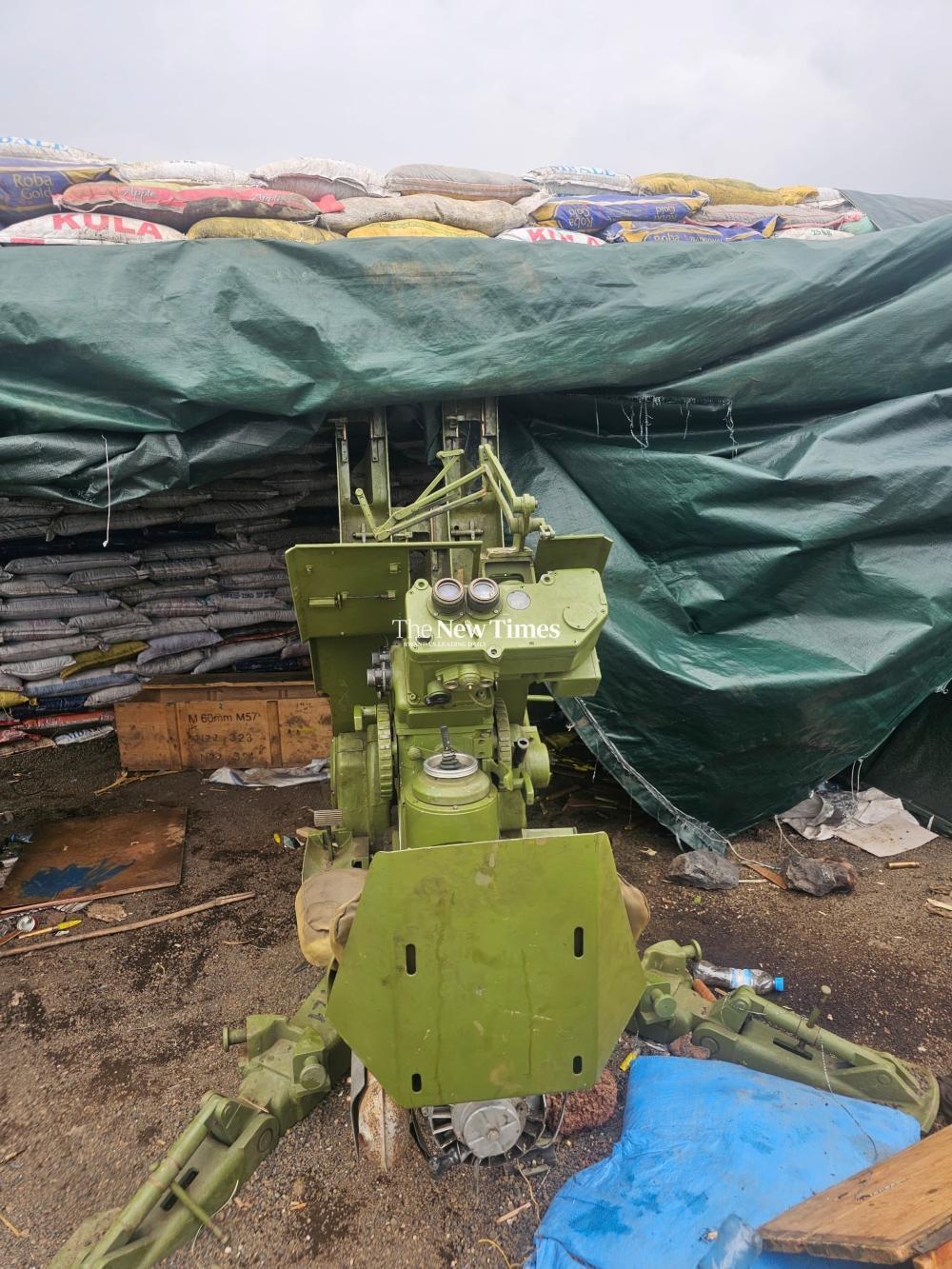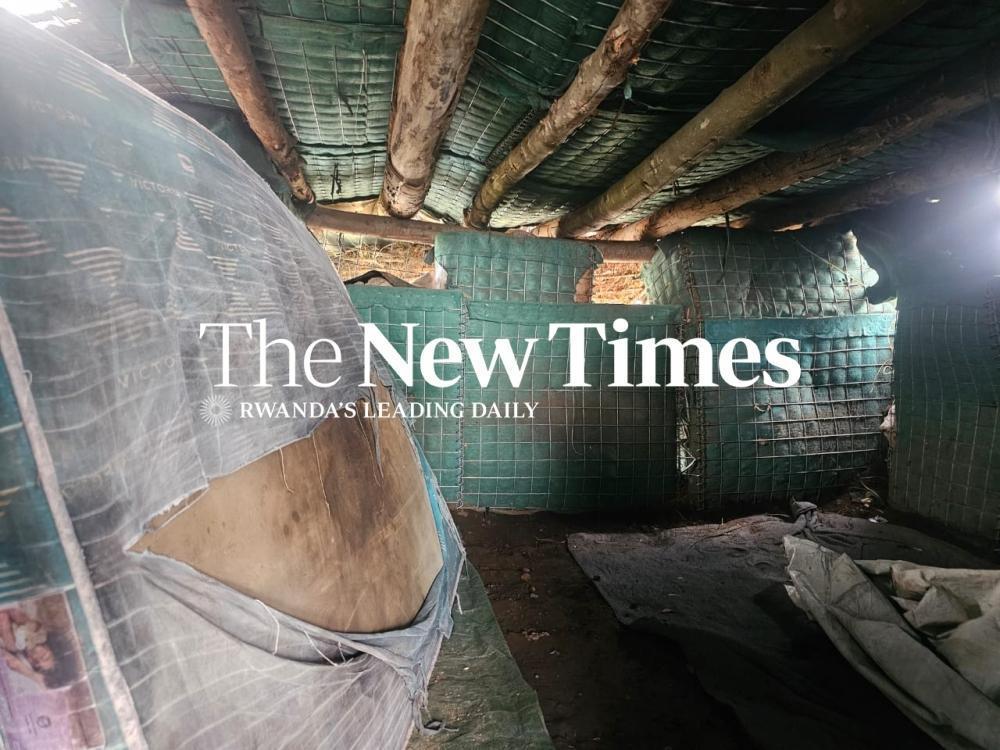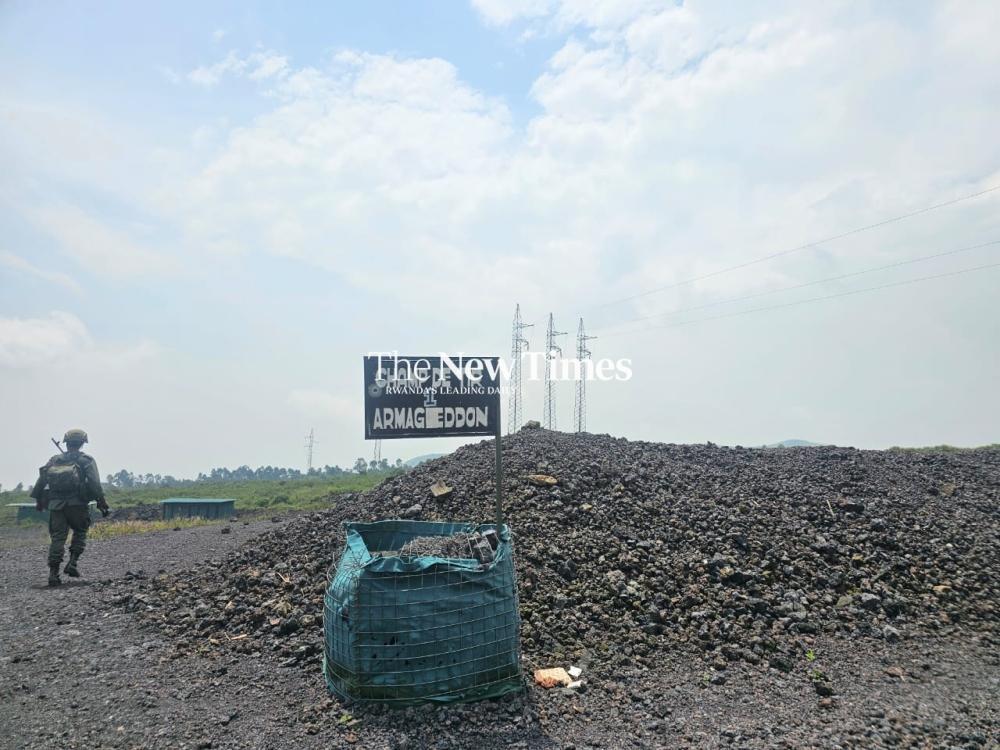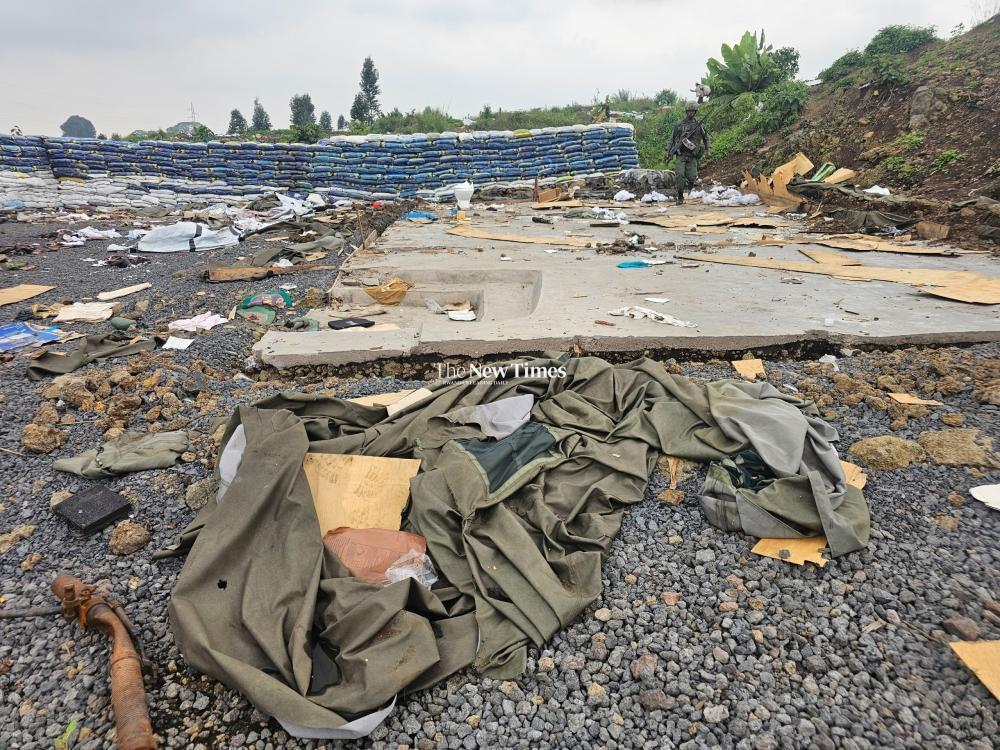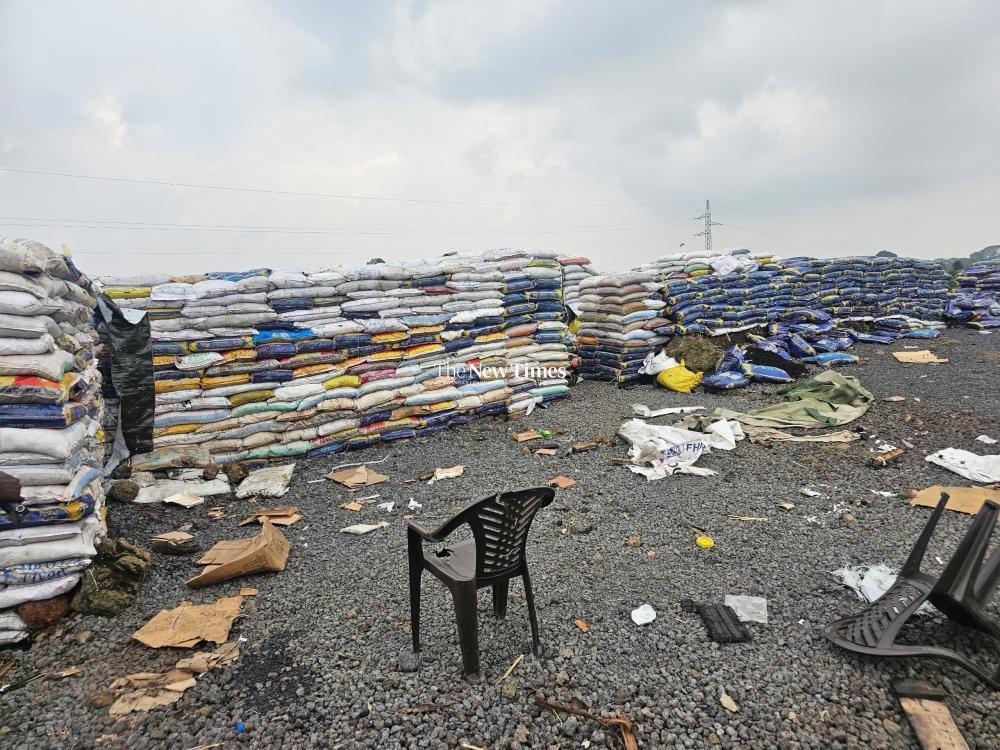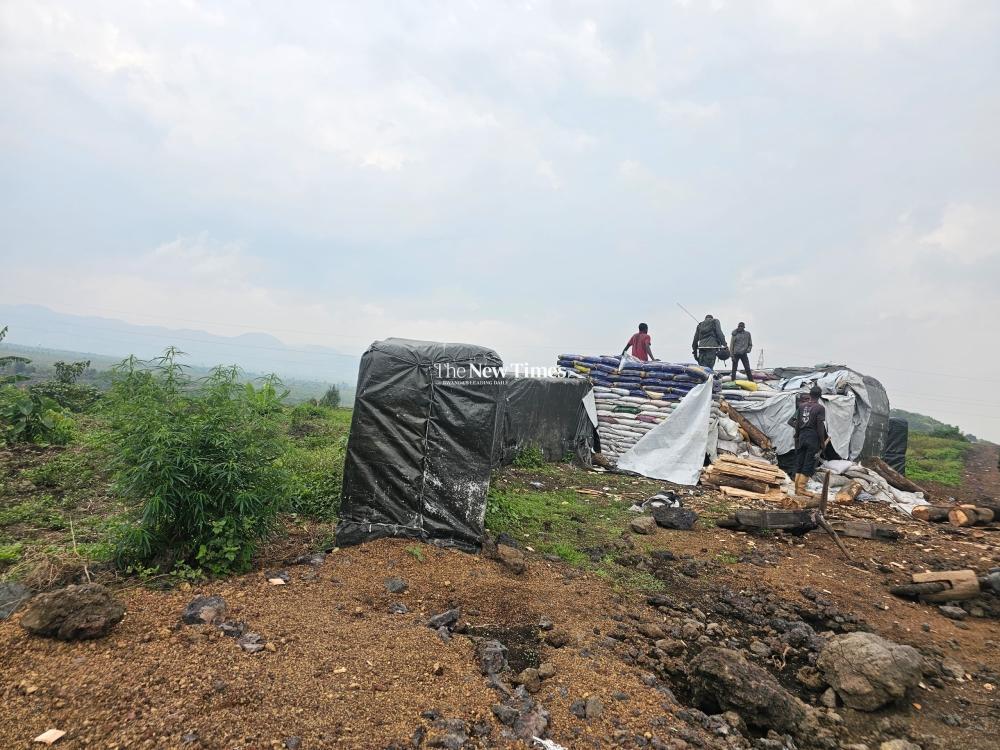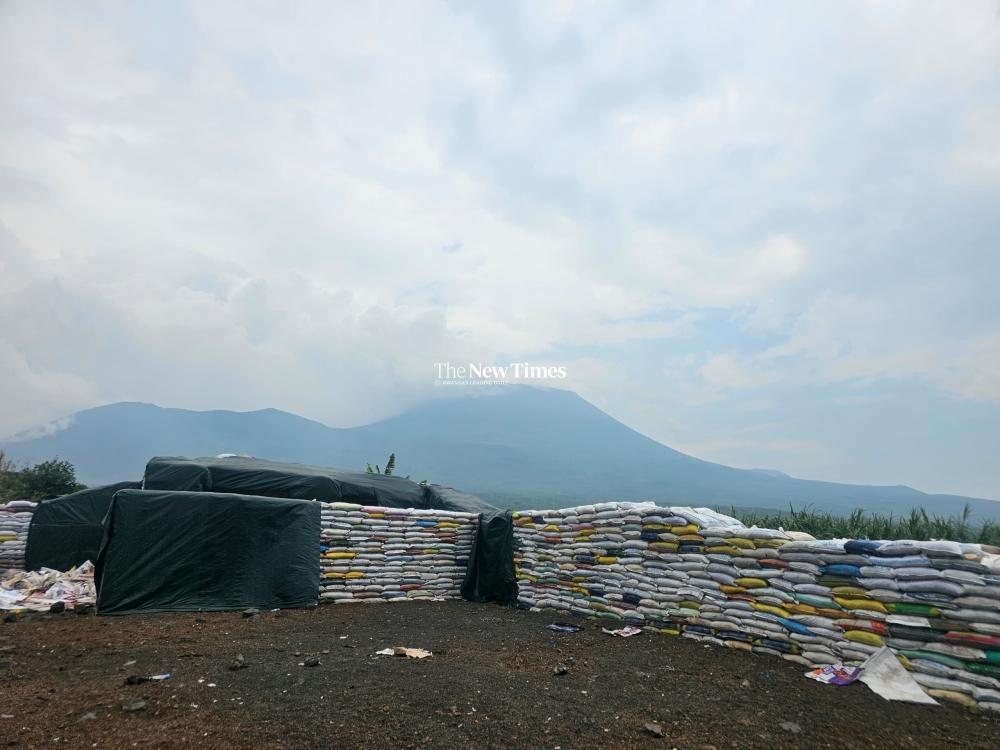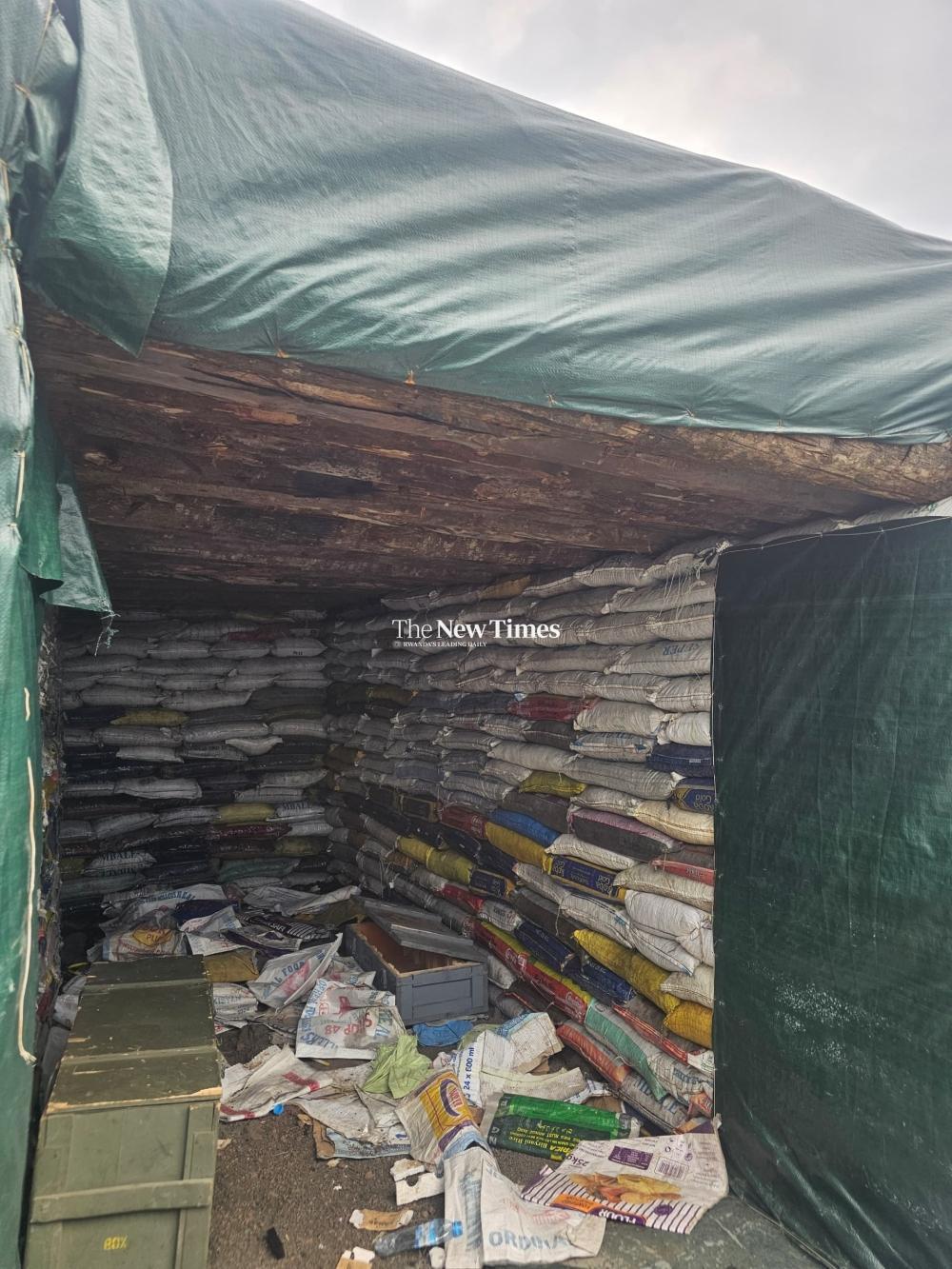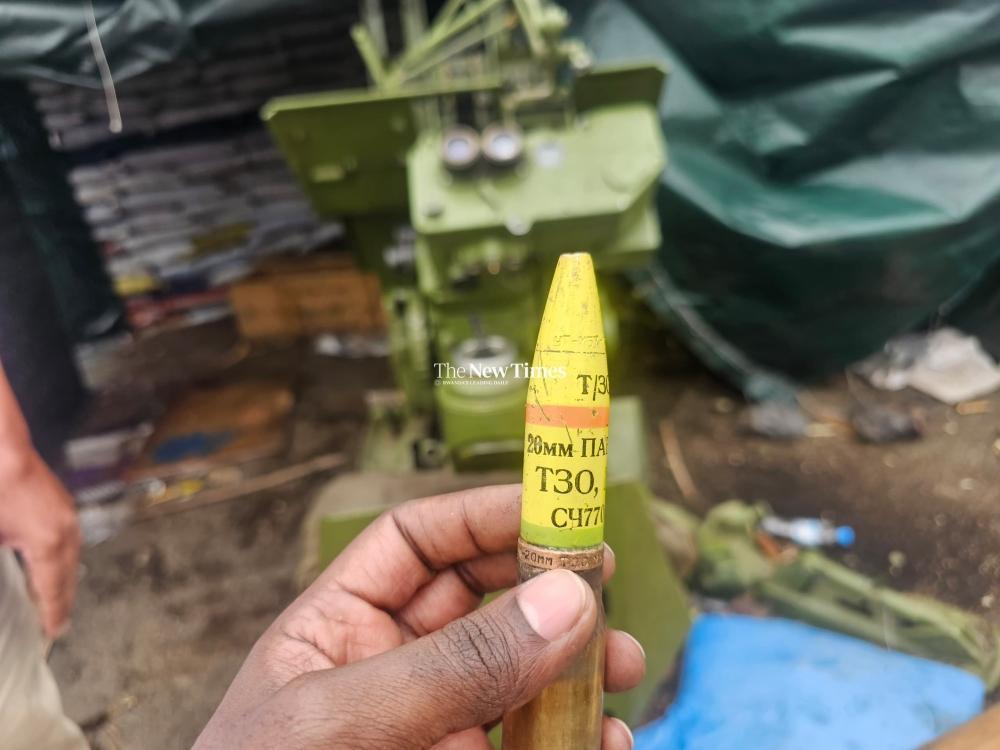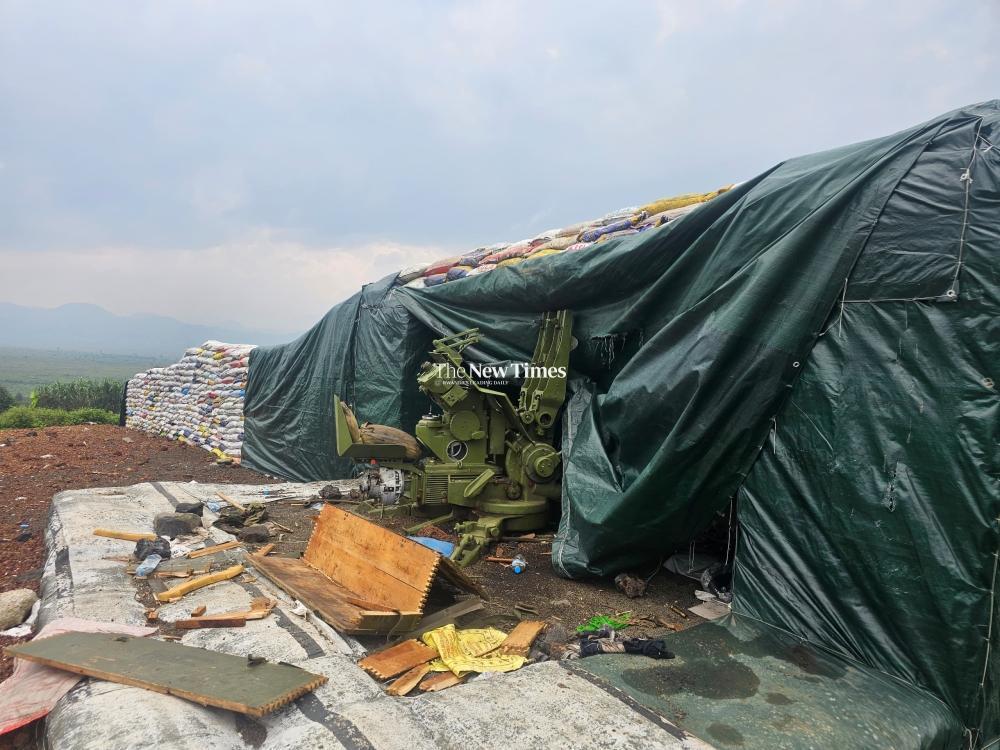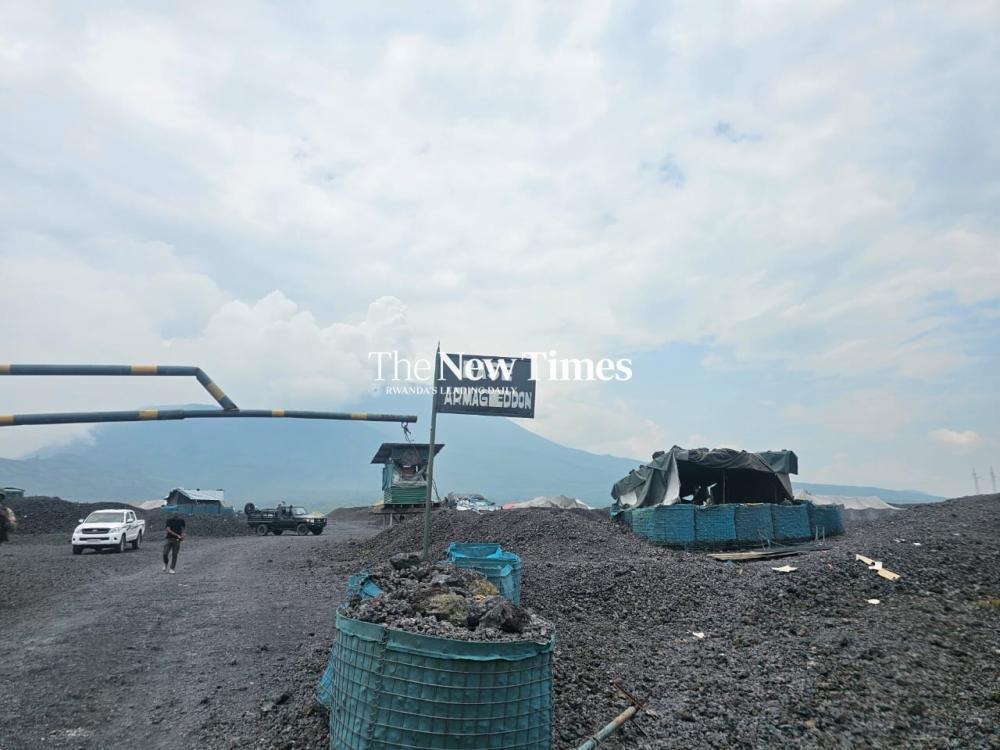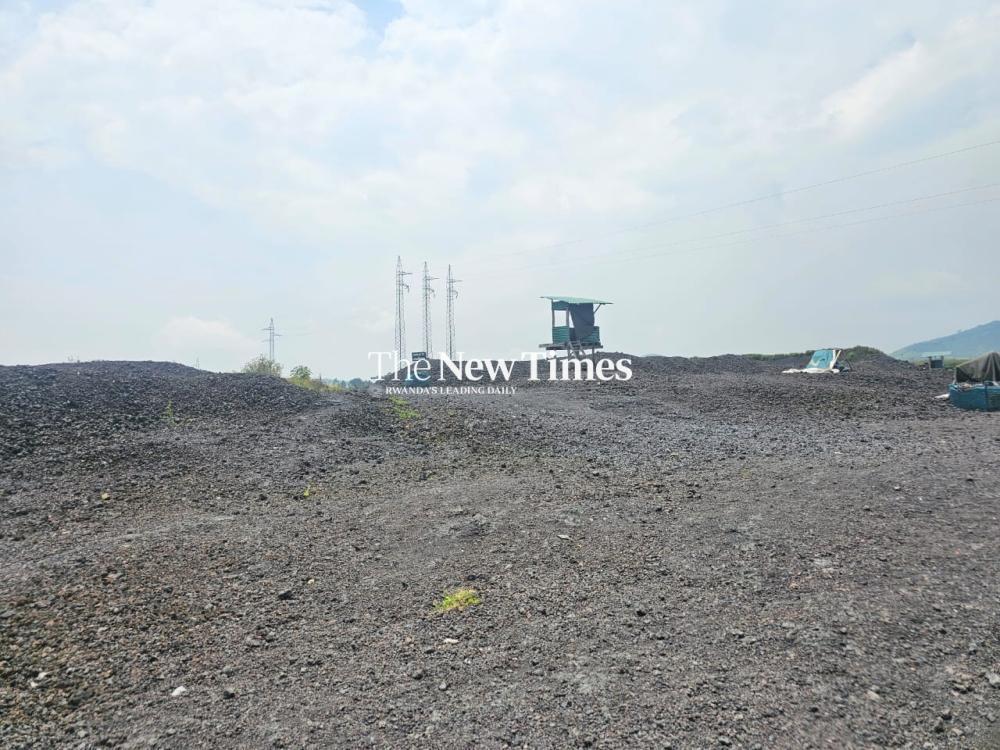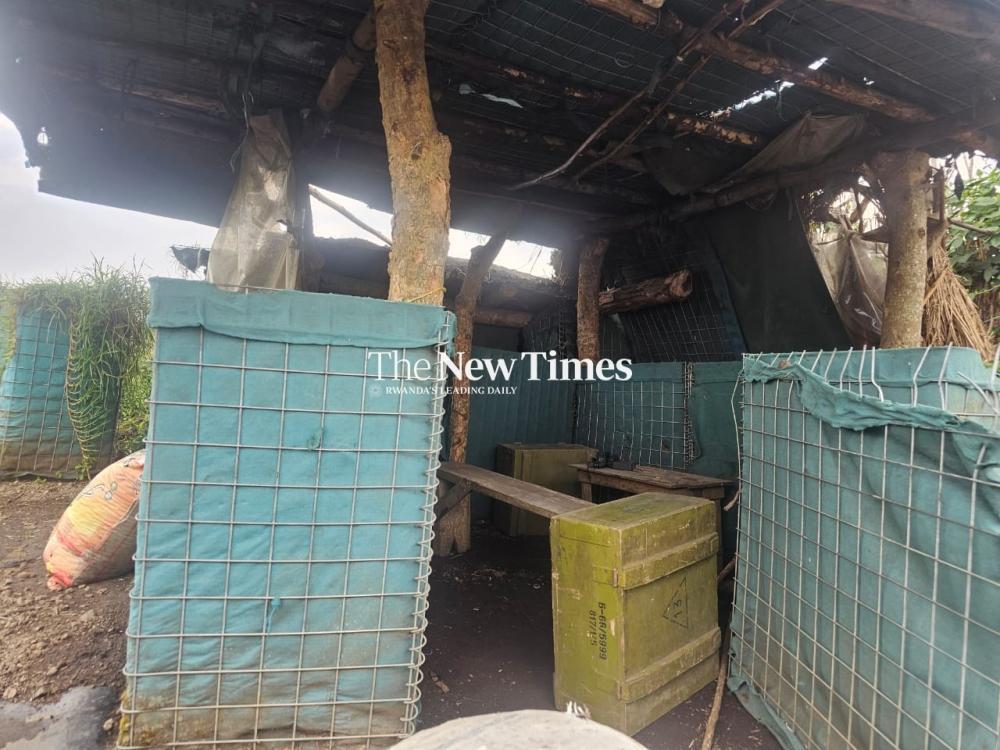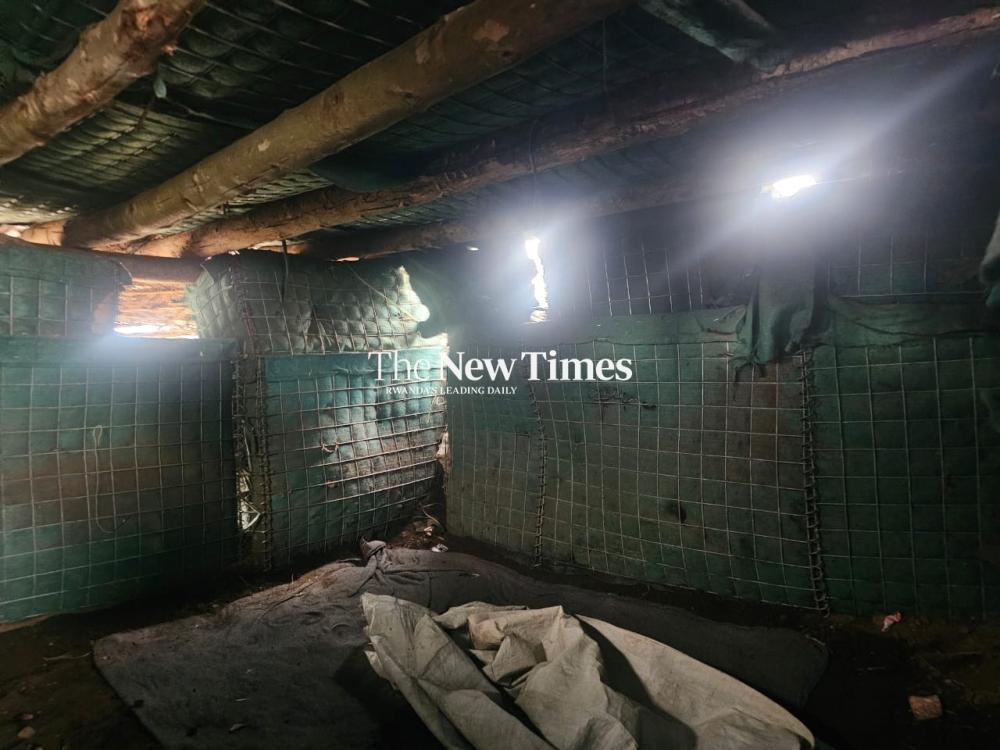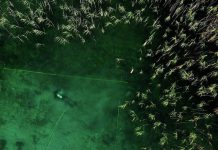Africa-Press – Rwanda. In the days leading up to the seizure of Goma by the M23 rebels last month, the FDLR militia – the UN and US-sanctioned terror group founded by extremists linked to the 1994 Genocide against the Tutsi in Rwanda – had moved dangerously too close to the Rwandan border.
The group had set up a major base at Kanyamahoro in Nyiragongo territory, 21km north of Goma, the most advanced of FDLR and DR Congo’s deployments, The New Times has established.
Kanyamahoro, a ground of strategic importance that lies within 3km of Rwanda, menacingly overlooks Munege cell in Busasamana sector, Rubavu District.
It was the position held by elite FDLR special force, the Commando de Recherche et d’Action en Profondeur, or CRAP.
This deployment marked a bold statement by the militia, considering that, just across the border in Busasamana, there is a Rwanda Defence Force base.
The position is now in the hands of M23 rebels, who have since marched onto South Kivu, capturing its capital Bukavu on Sunday.
It is estimated that at least 400 FDLR fighters were deployed at Kanyamahoro, roughly 1km from Kibumba on Goma-Rutshuru axis, although hundreds of others are believed to have been in the vicinity.
The strategic base, which overlooks Rwanda’s Busasamana sector in Rubavu, is surrounded by heaps of sandbags and trenches
We visited this FDLR/CRAP position last Tuesday, February 11, and toured its communication trenches and command post. The position was under the command of one Major Benjamin Nimubutumwa, a CRAP commando, we learnt.
Inside the command post is a war room, with an old bench and a table, and two anti-tank weapon boxes, where the militia leader planned and coordinated their operations.
There are also pieces of communication gadgets.
Further inside was the commander’s bedroom, with a soiled Victoria mattress. The structure is built with trees, sandbags, tins and plastic sheeting.
‘Omega moved base closer to Rwanda’
This frontline position was part of a network of FDLR positions across a large swathe of highlands, with protective rear units occupying several dominating hills west of Kanyamahoro. The closest of these hills, Kanyangoma, lies 5km away, with FDLR also having bases on Amabere y’Inkumi, Nyamushwi, and Kanyabuki hills. These series of hills are in the shadows of Mount Nyirangongo.
One security source familiar with FDLR deployments in eastern DR Congo said the group’s top military commander, ‘Maj Gen’ Pacifique Ntawunguka alias ‘Omega’ had his base behind Kanyangoma, in a locality known as Kamugogo, some 10km from Kanyamahoro.
When the ongoing conflict between Congo government forces and M23 broke out, Omega reportedly moved closer to the Rwandan border, setting up new headquarters in Kamugogo, Only 10km from the Rwandan border. Previously, his main base was believed to be at a locality known as Paris in Rutshuru territory, some 60km from the border with Rwanda.
The mercenary camp at Trois Antennes hill (background, left) was collocated with a MUNUSCO camp situated on the opposite hill of Kiringo (in the background, right).
“It is safe to say that Omega was literally in the vicinity of Kanyamahoro where his frontline fighters were,” said the source.
Meanwhile, The New Times learnt that Omega may not have died as previously claimed, with one source suggesting he may have escaped M23 assault on FDLR strongholds. Along with hundreds of FLDR combatants, he’s believed to have melted deeper into the rugged forests around Mount Nyamuragira.
We also learnt that some FDLR fighters retreated with the rest of the FARDC-led coalition forces in the direction of South Kivu, while others ditched their military fatigues and disappeared into civilian populations.
However, some have since been captured, including “one very senior officer, at the rank of a Brigadier General, who was arrested hiding in a suburb of Goma around February 7.”
‘A part of DR Congo military build-up’
FDLR had previously maintained a small observation post around Kanyamahoro, according to a source, upgrading it to a fully-fledged base when they were integrated into DR Congo’s military war effort against the M23.
“The FDLR deployment was a part of a broader troop build-up by DR Congo near the Rwanda border,” he said.
A retired RDF Colonel who The New Times spoke to in the days following our tour said the “offensive posture by FDLR meant that, most likely, they already had a screen force (a smaller layer of fighters) a lot closer to the Rwandan border, some possibly even with one leg inside Rwanda.”
Sources also pointed at what they described as a broad plan by DR Congo and its backers to invade Rwanda on the pretext that Kigali was supporting the M23 rebels, a claim Rwanda has dismissed.
They pointed at the significance of FDLR’s deployment at Kanyamahoro as the first line of offence – and defence – against the M23 rebels and, ultimately, Rwanda “which had been identified as the ultimate target of the coalition operations.”
They also cited an elaborate contiguous deployment positioning that involved FDLR, DR Congo troops (FARDC), Southern African Development Community (SADC) forces, United Nations Organization Stabilization Mission in the Democratic Republic of the Congo (MONUSCO), and European mercenaries.
The New Times visited each of the six bases for the coalition forces within proximity of one another between Kibati and Kanyamahoro, with the FDLR/CRAP base being the most advanced of them all.
The Kirimanyoka base
After Kanyamahoro, the closest coalition deployment was that of FARDC’s elite Hiboux (special forces) and presidential guard units at Kirimanyoka, about 3km from Kanyamahoro in the direction of Goma.
During fighting here, an M23 commander told us, M23 seized heavy weapons, including a BM-21 Grad, a multiple rocket launcher that can fire 40 rockets within 20 seconds up to 40 kilometres.
The camp also possessed 122m D30 howtzers, which can hit a target in 15km with accuracy, and 107 katyusha rocket launchers with a shooting range of up to 8km. This means that, from this location, some of these weapons could easily strike targets in Musanze District. “They had coordinates of RDF bases in Bigogwe and Mudende, which are 13km-15km away,” said one of the sources.
When we visited this encampment last week, we also found a 20mm anti-aircraft gun next to the command post, with a shooting range of up to 1500 metres.
The base is heavily fortified, with numerous trenches, and an extended defensive line made with heaps of sandbags, in some cases towering several meters high. Some of the materials used to build the encampment bore UN labels or those of humanitarian agencies.
To take this base, the M23 had to attack on multiple fronts, one of its forces going behind the enemy lines leading up to a dawn attack on January 4. The battle here lasted eight hours before M23 took the base. A FARDC Colonel was captured in the process, along with 150 of his troops.
‘The Armageddon’
Barely a kilometre from Kirimanyoka military base lies the Armageddon training base in Kibati that was run by SADC forces. The base doubled as the home for a FARDC special force battalion, named Satan II.
The term Armageddon has often been described as the “final and conclusive battle between the forces of good and evil”. Also found in the Bible, in the Book of Revelation, this term carries a similar meaning to ‘apocalypse’, a term infamously used by key masterminds of the Genocide against the Tutsi. This raises concerns on the intentions of those behind this military facility at Kibati, not far from the border with Rwanda.
Meanwhile, the name ‘Satan II’ is mostly used in reference to the world’s deadliest nuclear missile. The base boasts several shooting range spaces (areas with targets for controlled shooting practice).
The Armageddon military training camp oversees a range of hills and mountains, which were occupied by FDLR’s protective units, including Kanyangoma, Amabere y’Inkumi, Nyamushwi, Kanyabuki, and Nyiragongo.
Three or so kilometers north of Armageddon lies Kanyangoma hill, where FDLR maintained a position, with the M23 officers who were with us on the tour telling us that they found out there had been an effort to connect the two positions to allow for smooth flow of supplies to the FDLR position at Kanyangoma.
With the use of a microscope, we were able to see a bulldozer abandoned close to the foot of Kanyangoma hill across from the previously SADC-run training facility, which M23 says was being used to literally pave a road to the FDLR position.
“This is one among lots of pieces of evidence showing how FDLR was an integral part of the operations by FARDC and its allied forces and militias,” an M23 Major told us.
Collocation of MONUSCO and mercenary camps
From here, we headed to Trois Antennes on the edge of Kibati to see what we were told was a base of European mercenaries who were fighting alongside FARDC and its allies, including SADC forces, Burundian troops as well as FDLR and the local Wazalendo militias.
But, on our way to this ‘mercenary base’, we drove past a MONUSCO camp, roughly 2km from the Armageddon. This is one of the two bases that MONUSCO maintains in the area, the other situated on a hill (known as Kiringo) just adjacent to Trois Antennes, where European mercenaries were based.
Both the United Nations (1998) and African Union (1977) prohibit the use of mercenaries, long associated with wanton human rights violations.
At Trios Antennes, we met a mother with two children, who told us that “this hill used to be occupied by white men” and claimed that “there was regular interaction between them and those on that hill”. She was pointing at Kiringo, where MONUSCO still maintains a base. The two hills are connected by a narrow valley.
The majority of MONUSCO contingents do not have an offensive mandate, but the peacekeepers have often provided support, including air cover, to Congo’s troops in operations against M23.
Still, within MONUSCO, there is a combat wing that was first deployed in 2013 with an offensive mandate, comprised of troops from three SADC countries, namely, South Africa, Tanzania and Malawi. This is the same MONUSCO component, known as Force Intervention Brigade, that helped expel M23 from Goma and the rest of DR Congo territory in 2013.
‘Leave FDLR alone’
However, after they defeated M23 they downed their tools and did nothing to disarm the genocidal FDLR, which lies at the heart of tensions between Rwanda and DR Congo.
“After FIB’s operations against M23, the next group to tackle was the FDLR, but the Congolese government told them to leave FDLR alone,” a MONUSCO employee whom I met in Goma last week told us on condition of anonymity.
But there have also been suggestions that MONUSCO was unwilling to help eliminate the FDLR, which has continued to prey on Congolese citizens, particularly targeting Rwandophone communities, especially the Tutsi.
Trois Antennes in Kibati, where hundreds of European mercenaries were stationed before the base was overrun by M23 as they marched on to Goma last month
Notably, the countries that deployed troops under FIB more than a decade ago are the same SADC nations that raised combat troops for SAMIDRC slightly over a year ago. FIB also continues to exist.
Asked what this continuous deployment of the coalition partners on this axis, and the positioning of FDLR closest to the Rwandan border meant, the retired Colonel we spoke to last week, said, “It’s clear they were all working together, they were so close to one another, and they had one mission: to invade Rwanda.”
“To have FDLR as the forward deployment was strategic, they are the ones who knew Rwanda better than the others and they have had a long-term plan to destabilise Rwanda.”
Trucks that were seized by M23 at the Camp de Tir Armageddon in Kibati outside Goma
He also said that, from a strategic and tactical perspective, the disposition of the FARDC and its allies, including FDLR, between Kiringo and Kanyamahoro, had been meticulously thought out. He added that these military positions were being protected by friendly units occupying dominating features northwest, including Mount Nyiragongo.
Multiple sources we spoke to share this view, with the MONUSCO staffer whom I spent time with on my first day in Goma on February 7 even stating that an old classmate of his, now a self-proclaimed Major in the Wazalendo ranks, had confided in him that a plan had been mooted to attack Rwanda. He even advised him to move his family from Rwanda for their safety.
Aside from MONUSCO troops, which still occupy their positions, all the other military bases we visited are under the control of M23.
‘No more evidence needed’
Th M23 officer who was with us as we visited these installations was the same commander who showed us around at Goma airport the previous day, including during a tour of the main joint command centre of FARDC, MONUSCO and their allies, including FDLR elements.
President Felix Tshisekedi has publicly stated his desire to help remove the government of Paul Kagame in Kigali, with his wife, Denise Nyakeru Tshisekedi, even paying a visit to injured FDLR/CRAP combatants at a hospital in the capital Kinshasa last month.
“I guess that we don’t need any more evidence of the support that this Rwandan genocidal force, which has spread its extermination ideology to the whole FARDC military coalition, benefits at the highest level in Kinshasa,” Rwanda’s Foreign minister Amb. Olivier Nduhungirehe said after a photo of Nyakeru and the FDLR fighter, with prominent arm tattoo reading, CRAP, emerged on social media.
In the battlefield, the rebels are outnumbered and outgunned by the government coalition forces (a conservative estimate put the latter’s strength in and around Goma before M23 takeover to nearly 60,000), but they often deal with this by mostly deploying a pincer movement strategy. This allows the M23 to mount simultaneous offences from different directions, overwhelming the enemy in the process.
This was the case when the rebels captured key localities, such as Kanyarucinya, and Sake and Mubambiro, north and west of Goma, respectively, as they marched on the capital of North Kivu province last month.
After seizing Bukavu on Sunday, the M23 again called for peace talks with Tshisekedi’s government, which it accuses of discrimination and ethnic cleansing, but Kinshasa has repeatedly ruled out dialogue with the rebels favouring a military solution instead.
The training camp was named Armageddon, which means the location of a final battle between good and evil. It was being run by SADC troops, but it doubled as the base of a FARDC battalion named Satan II.
The writer inside what used to be the ‘war room’ of FDLR’s ‘Major’ Benjamin Nimubutumwa, on February 11
The Kirimanyoka base was one of at least six camps, including one for FDLR, in close proximity of one another on Goma-Rutshuru axis
Piles of sandbags at FARDC’s former base in Kirimanyoka were mostly arranged against the backdrop of Rwandan border areas
Inside what used to serve as FDLR’s ‘Major’ Benjamin Nimubutumwa’s command post at Kanyamahoro, there is a bench, a table, two anti-tank weapon boxes, and pieces of communication gadgets.
Different types of weapons and ammunition were captured by M23 rebels at Trois Antennes mercenary camp in Kibati
A20mm anti-aircraft gun at Kirimanyoka base is among the weapons abandoned by the special forces and presidential guards when they confronted M23 on January 4.
A mattress inside the bedroom at the command post
‘Camp de Tir Amargeddon’ in Kibati was run by SADC troops
Source: The New Times
For More News And Analysis About Rwanda Follow Africa-Press

